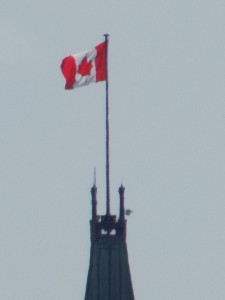Party time Canada vs. US conventions

Stamps of approval: Queen Elizabeth is the official Head of State and formally asks the winning party leader to be Prime Minister. Since she doesn’t live in Canada, the Governor-General does it for her. Photo: James Morgan
As I clunk away at this keyboard, Republicans are wrapping up in Cleveland at a heavily guarded convention crowning Donald Trump as their nominee for President. It’s an event that will either set the Republicans on a path to victory in November’s election or deal the Grand Old Party a body blow.
We have three main political parties in Canada. The Conservatives are on the right. The Liberals are mixed but generally govern from the center. The New Democratic Party (NDP) is on the left. The one thing they all have in common though is the way they select their leaders and their candidate for Prime Minister.
The leader of a party is the person who can become Prime Minister, if their party wins enough seats in the House of Commons to form a government. This doesn’t happen automatically.
A day or so after the election, the leader usually has a nice little tea and cookies sort of meeting with the Governor General, who represents Queen Elizabeth II, our Head of State who doesn’t live here. The Governor General, who hopefully has read the election results in the newspaper, formally invites the leader of the winning party to form the next government.

Pinnacle of power: the Canadian flag atop the Peace Tower on the Parliament Buildings in Ottawa. Photo: James Morgan
The office of the Prime Minister is not separate from Parliament. Justin Trudeau is also a Member of Parliament (MP). Our constitution doesn’t actually say that we need to have a Prime Minister or that he/she has to be an MP, it’s just one of those accepted traditions that evolved over the centuries in Britain, and adopted in Canada. Anyone who is a member of a political party can run to be the leader if the job is up for grabs. All that one usually needs is a lot of money and friends in the right places.
Right now, both the Conservatives and NDP are in various stages of leadership races. Canadian political parties used to send delegates from local districts to conventions who would pledge to support various leadership candidates. They have all moved to a system where members vote in their local districts. Those votes are added up and then the results announced at a central convention.
Depending on the percentages required to win and the number of candidates, it can take more than one round of balloting. There’s far less drama at today’s leadership conventions as a result. Most voting members are scattered in community centers across the country, and the crowd at the main convention is usually comprised of the candidates and party bosses–unlike US political conventions. TV networks no longer broadcast every minute of the conventions live. No drama.
Parties select their local candidates in a similar way with nomination meetings. Provincial parties use the same system.
Our system is different than in the USA, but we still end up with all of the good, bad, and the ugly of politics. There’s no perfect system. Winston Churchill was right when he said, “Democracy is the worst form of government, except for all the others.”
Tags: canada, government, politics, US







